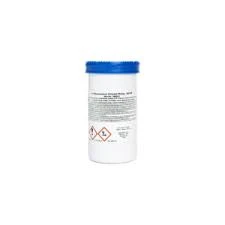polyacrylamide uses
Understanding the Uses of Polyacrylamide A Versatile Polymer
Polyacrylamide (PAM) is a synthetic polymer that has found a diverse range of applications across various industries due to its unique properties. Known for its ability to absorb water and form gels, polyacrylamide is recognized for its effectiveness as a flocculant, a thickening agent, and a soil conditioner. This article delves into the various uses of polyacrylamide, highlighting its significance in fields such as water treatment, agriculture, and industrial applications.
1. Water Treatment
One of the most significant uses of polyacrylamide is in water treatment processes. It is commonly utilized as a flocculant, a substance that promotes the agglomeration of suspended particles in water, thereby facilitating their removal. In municipal water treatment facilities, polyacrylamide works effectively to clarify water by binding together smaller particles that would otherwise remain suspended.
Moreover, in wastewater treatment, polyacrylamide aids in the separation of solids from liquids. This is crucial for reducing the environmental impact of industrial wastewater before it is discharged. Additionally, PAM is employed in oil and gas industries during drilling processes, helping to improve the recovery of oil by enhancing the efficiency of water flooding techniques.
2. Agriculture and Soil Conditioning
Polyacrylamide also plays a crucial role in agriculture, particularly as a soil conditioner. When applied to soil, PAM helps improve soil structure and increases its water retention capacity. This is especially beneficial in arid and semi-arid regions where water scarcity poses a significant challenge to farming.
By enhancing soil moisture retention, polyacrylamide reduces the frequency of irrigation needed, helping to conserve water and improve crop yields. Furthermore, PAM can assist in controlling soil erosion by stabilizing soil particles, making it an essential tool for sustainable agriculture practices.
In addition to improving soil properties, the use of polyacrylamide in agriculture can enhance nutrient retention. By preventing the leaching of fertilizers, it ensures that crops receive optimal nutrient availability, thereby promoting healthy growth and productivity.
polyacrylamide uses

3
. Industrial ApplicationsIn the manufacturing sector, polyacrylamide is utilized as a thickening agent in various formulations. Its ability to increase viscosity makes it valuable in the production of paints, coatings, and adhesives. Additionally, PAM is used in the textile industry during the dyeing process to help control the rheological properties of dye baths.
In the paper industry, polyacrylamide acts as a retention aid, helping to increase the efficiency of fiber retention during the papermaking process. This not only enhances the quality of the final product but also reduces waste, contributing to more sustainable manufacturing practices.
4. Biomedicine
In the field of biomedicine, polyacrylamide has gained attention for its use in gel electrophoresis, a technique used for the separation of macromolecules like DNA and proteins. Polyacrylamide gels provide a medium for these applications due to their excellent mechanical stability and tunable pore sizes. This makes PAM indispensable in biological research and diagnostics.
Additionally, polyacrylamide-based hydrogels are being explored for drug delivery systems due to their biocompatibility and ability to swell in response to environmental changes. This is paving the way for innovative therapeutic strategies and improved medical devices.
Conclusion
In conclusion, polyacrylamide is an incredibly versatile polymer that serves a multitude of purposes across various sectors. Its applications range from essential roles in water treatment and agriculture to significant contributions in industrial manufacturing and biomedicine. As industries continue to seek sustainable and efficient solutions, the demand for polyacrylamide is likely to grow. Understanding the properties and benefits of this polymer not only highlights its importance but also encourages further research and development into its applications, ensuring it remains at the forefront of technological advancements for years to come.
-
Pbtc Scale InhibitorPBTC: A Scale Protector for Industrial Water TreatmentNewsAug.05,2025
-
Organic Phosphonate: An Efficient Defender in the Field of Scale InhibitionNewsAug.05,2025
-
Hydrolyzed Polymaleic Anhydride: Green Pioneer in Scale Inhibition FieldNewsAug.05,2025
-
PAPEMP Polyamino Polyether Methylene Phosphonic Acid For SaleNewsAug.05,2025
-
Flocculant Water Treatment: A Pioneer in Purification in the Field of Water TreatmentNewsAug.05,2025
-
Benzyl Isothiazolinone: An Efficient and Broad-Spectrum Antibacterial Protective GuardNewsAug.05,2025





